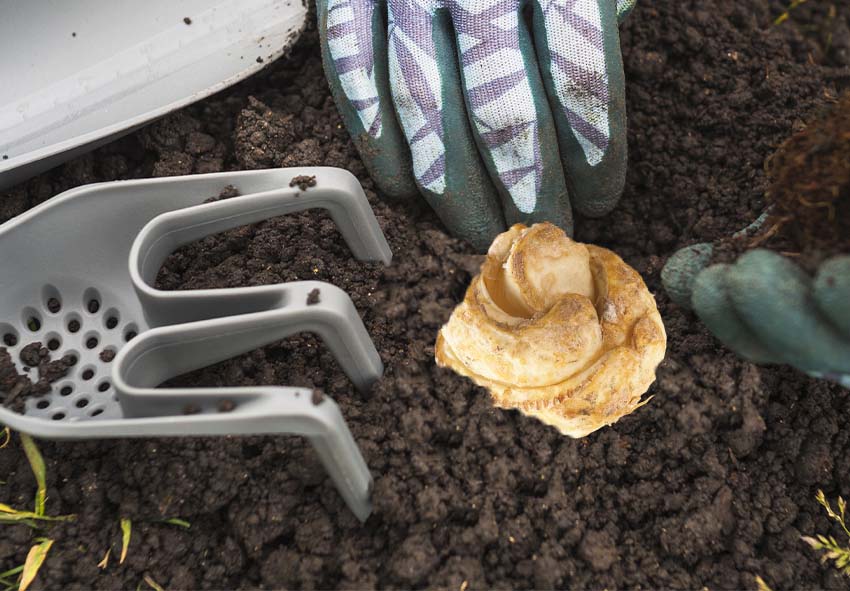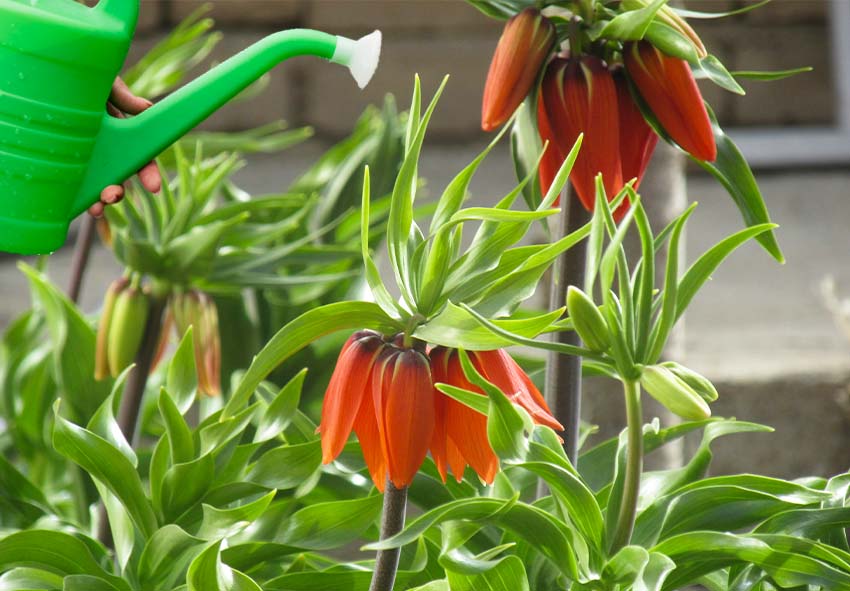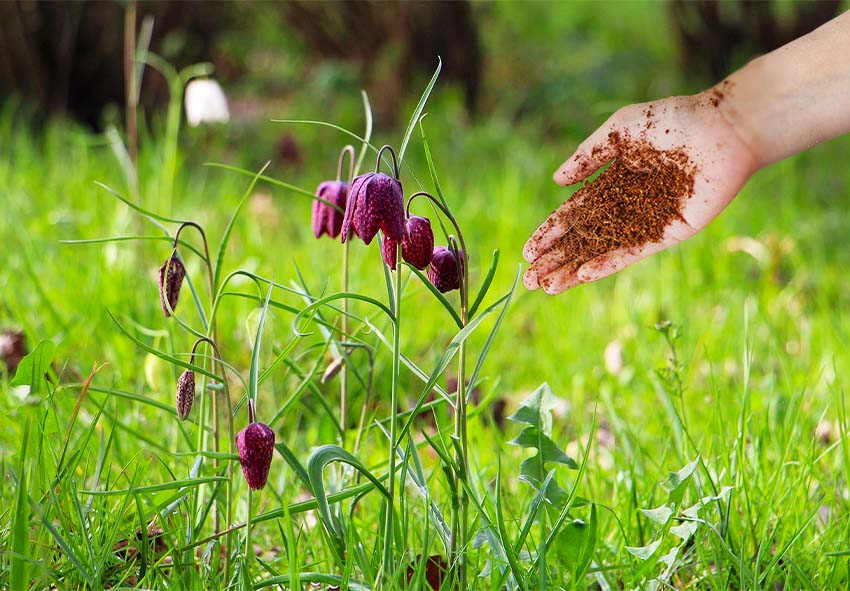Fritillaria, known for their unique and striking bell-shaped flowers, add an element of exotic beauty to any garden. These captivating plants, with their nodding blooms in a variety of colors, are a favorite among gardeners looking to introduce a touch of elegance and variety to their flower beds. To ensure that your Fritillaria thrives and continues to enchant year after year, it’s essential to understand the year-round care required for these bulbs.
Spring Care for Fritillaria

Spring is a critical season for Fritillaria, as it sets the stage for healthy growth and vibrant blooms. Proper planting, watering, and pest management during this time are key to establishing strong plants.
Planting New Bulbs
Planting new Fritillaria bulbs in the spring is a rewarding task that requires attention to detail for optimal results. The best time to plant Fritillaria bulbs is in early spring, as soon as the soil can be worked Here are some tips you may need:
- Choose a location that receives full sun to partial shade and has well-draining soil.
- Dig holes about 4-6 inches deep, ensuring there is enough space between each bulb to allow for growth.
- Place the bulbs with the pointed end up and cover them with soil.
- Water the newly planted bulbs thoroughly to settle the soil and encourage root establishment.
Watering and Feeding
Proper watering and feeding are crucial during the growing season to support healthy foliage and flower development. Fritillaria prefers consistently moist soil but be cautious not to overwater, as this can lead to bulb rot. Water the plants deeply once a week, allowing the soil to dry out slightly between waterings. During the growing season, feed your Fritillaria with a balanced, slow-release fertilizer. Apply the fertilizer once at the beginning of spring and again midway through the growing season to provide the necessary nutrients for robust growth.
Pest and Disease Management
Springtime brings the risk of pests and diseases that can affect Fritillaria plants. Common pests include aphids, slugs, and snails, which can damage the foliage and flowers. To manage these pests, inspect your plants regularly and remove any visible pests by hand. Consider using organic pest control methods such as neem oil or insecticidal soap. Fritillaria can also be susceptible to fungal diseases like Botrytis and Fusarium. To prevent these diseases, ensure good air circulation around the plants, avoid overhead watering, and remove any affected foliage promptly.
Summer Care for Fritillaria

As summer arrives, the care requirements for Fritillaria plants shift to maintaining soil health and moisture levels, adjusting watering practices, and staying vigilant against seasonal pests. Proper summer care ensures that your Fritillaria remains healthy and resilient throughout the hotter months.
Mulching and Soil Maintenance
Maintaining soil health and moisture levels during the summer is crucial for the well-being of Fritillaria. Follow this tips:
- Applying a layer of mulch around the base of the plants helps retain soil moisture, regulate temperature, and suppress weed growth.
- Use organic mulches like shredded bark, straw, or compost, and apply a 2-3 inch layer, ensuring it doesn’t touch the stems to prevent rot.
- Additionally, periodically check the soil’s pH and nutrient levels.
- Amend with compost or organic fertilizers as needed to keep the soil fertile and well-balanced.
Watering Needs
Adjusting your watering schedule during the summer is essential to prevent overwatering and drought stress, which can be detrimental to Fritillaria. While Fritillaria needs consistent moisture, the frequency and amount of watering should be carefully monitored. Water deeply and less frequently, allowing the top few inches of soil to dry out between watering sessions. This encourages deep root growth and helps the plants withstand hot, dry conditions. Early morning watering is preferable to reduce evaporation and provide the plants with moisture throughout the day.
Monitoring for Pests
Summer brings a different set of pests that can threaten Fritillaria plants. Spider mites, thrips, and whiteflies are common summer pests that can cause significant damage if not managed promptly. Regularly inspect your plants for signs of infestation, such as stippling on leaves, webs, or visible insects. To control these pests, employ organic methods such as introducing beneficial insects like ladybugs, applying neem oil, or using insecticidal soaps. Maintaining good garden hygiene, like removing debris and ensuring proper spacing, also helps reduce pest habitats.
Fall Care for Fritillaria

Fall is a crucial time for preparing Fritillaria plants for their dormant period, ensuring they have the best conditions to thrive in the following growing season. Key activities include preparing the plants for dormancy, dividing and transplanting bulbs, and enriching the soil with amendments.
Preparing for Dormancy
As the growing season winds down, it’s important to prepare your Fritillaria plants for dormancy:
- Allow the foliage to die back naturally, as this process helps the bulbs store energy for the next growing season.
- Do not cut back the leaves until they are completely yellow or brown.
- Reduce watering as the plants enter dormancy, ensuring the soil remains dry to prevent bulb rot.
- If you live in an area with harsh winters, consider adding a layer of mulch to protect the bulbs from freezing temperatures.
Dividing and Transplanting Bulbs
Fall is the ideal time to divide and transplant Fritillaria bulbs, ensuring they have enough space to grow and flourish. To divide the bulbs, carefully dig up the clump after the foliage has died back. Separate the smaller offset bulbs from the main bulb, ensuring each division has a healthy portion of roots attached. Replant the bulbs immediately in well-prepared soil, spacing them adequately to allow for future growth. This process helps rejuvenate the plants and can lead to more vigorous blooms in the spring.
Soil Amendments
Enriching the soil in fall prepares the garden bed for a successful growing season next year. Add a generous amount of compost to improve soil structure, increase nutrient levels, and enhance moisture retention. Incorporate other organic amendments like well-rotted manure or leaf mold to further boost soil fertility. Conduct a soil test to determine any specific nutrient deficiencies and adjust accordingly with appropriate fertilizers. This proactive approach ensures your Fritillaria bulbs have a nutrient-rich environment to support their growth and development.
Winter Care for Fritillaria

Winter care for Fritillaria involves protecting the bulbs from harsh weather, providing the right conditions for potted plants, and staying vigilant against winter diseases. Proper care during this season ensures that your Fritillaria bulbs remain healthy and ready to bloom in spring.
Protecting Bulbs from Frost
Protecting Fritillaria bulbs from frost and extreme cold is essential, especially in regions with severe winters. Apply a thick layer of mulch, such as straw, leaves, or pine needles, over the planting area to insulate the bulbs and maintain a stable soil temperature. In particularly cold climates, you can cover the ground with burlap or a frost cloth for added protection. Ensure that the mulch is removed gradually as temperatures warm in the spring to prevent the bulbs from rotting due to excess moisture.
Indoor Care for Potted Fritillaria
For Fritillaria grown in pots, winter care focuses on maintaining appropriate conditions indoors. Here are some tips you may need:
- Place the pots in a cool, well-lit area, such as an unheated garage or a bright basement.
- Water sparingly during the winter months, keeping the soil just barely moist to prevent the bulbs from drying out.
- Avoid overwatering, as this can lead to root rot.
- If you notice any new growth during the winter, move the pots to a slightly warmer location with more light to encourage healthy development.
Monitoring for Diseases
Winter can bring specific challenges in terms of diseases that can affect Fritillaria bulbs. Common issues include fungal infections like Botrytis and Fusarium, which thrive in cold, damp conditions. To prevent these diseases, ensure good air circulation around the plants and avoid excess moisture by not overwatering. Inspect the bulbs and surrounding soil regularly for any signs of rot or fungal growth, and remove any affected material promptly. Using a fungicide can help protect the bulbs if you have experienced problems with these diseases in the past.
Conclusion
By implementing the care tips outlined for each season, you can ensure that your Fritillaria plants remain vibrant and healthy year-round. Our blog is the best place to find any information you need. From planting and nurturing in spring to preparing for dormancy in fall, and protecting against winter chill, each step plays a crucial role in the overall well-being of your Fritillaria. With proper attention and care, your Fritillaria bulbs will reward you with stunning blooms and add a touch of elegance to your garden season after season. Embrace the joy of gardening and watch as your Fritillaria flourishes with each passing year.
Frequently Asked Questions (FAQs) about Care for Fritillaria
1. How should I care for Fritillaria during the summer months?
During the summer months, it’s crucial to maintain soil moisture levels by watering regularly and applying mulch around the base of the plants to retain moisture. Additionally, monitor for pests and diseases and provide adequate sunlight and ventilation.
2. What steps should I take to prepare Fritillaria for winter dormancy?
As the growing season winds down, allow the foliage to die back naturally. Reduce watering to prevent bulb rot, and consider adding a layer of mulch to protect the bulbs from freezing temperatures. Avoid cutting back the leaves until they are completely yellow or brown.
3. Can Fritillaria bulbs be ordered from your online store?
Our online store Dutch-bulbs.com offers a wide selection of Fritillaria bulbs in various colors, making it easy for you to add these elegant beauties to your garden. We source our bulbs from reputable growers to ensure you receive high-quality specimens. Simply browse our online catalog, select your preferred varieties, and follow the easy ordering process.
4. Can Fritillaria bulbs be grown indoors in pots?
Yes, Fritillaria bulbs can be grown indoors in pots. Place the pots in a cool, well-lit area, such as an unheated garage or a bright basement. Water sparingly during the winter months to prevent the bulbs from drying out, and avoid overwatering to prevent root rot.
5. What are the common pests and diseases that affect Fritillaria, and how can they be managed throughout the seasons?
Common pests affecting Fritillaria include aphids, slugs, and spider mites, while diseases such as Botrytis and Fusarium can also occur. Regularly inspect plants for signs of infestation or disease and take appropriate measures, such as handpicking pests or applying organic treatments, to manage them effectively throughout the seasons.
Published: 07.06.2024
